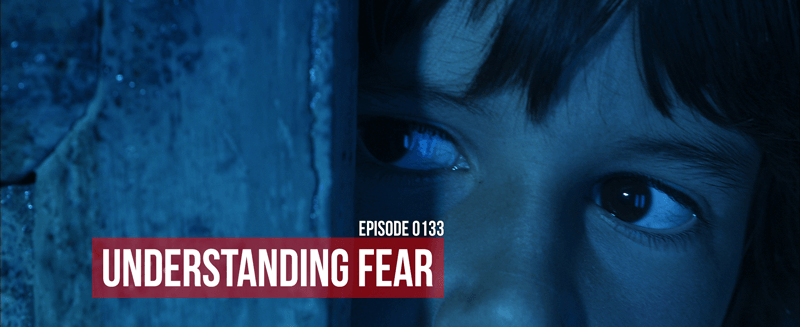We’ll discuss how we feed our fears, and the types of fears there are in humans. IN tomorrow’s episode we’ll discuss how to overcome fear in all your relationships. Today’s show comes from research in Psycology Today (The (Only) Five Basic Fears We All Live By), and Best Health Mag.ca (5 reasons why we feel fear). You can find these articles in the show notes on relationspodcast.com/133.
By the end of this episode:
- 5 Patterns We Use to Feed Our Fears
- 5 Types of Fear
Describe the problem
…Fear can be an insidious thing, seeping into our everyday lives and keeping us from the things that we want or enjoy. In this episode, we’ll talk about the patterns that keep fear a constant, and the five types of fear that hold us back.
Segment #1
A simple and useful definition of fear is: An anxious feeling, caused by our anticipation of some imagined event or experience.
“There are five typical patterns we use to feed our fears,” says Paul Tizzard, co-founder of Flying Without Fear. “Part of the solution is to recognize the patterns for what they are and then break them.”
- Worst-case scenario “Conspiracy theorists see the cabin crew walking down the aisle frowning, and automatically assume something bad is going to happen,” says Tizzard. “It’s not. They are just doing their job. You are looking for things to support your fear when they are not there.”
- “Awfulizing” or Catastrophizing “You feel something funny in your ear because of the change in pressure, and you automatically think it’s a bad thing,” says Tizzard. “Recognize it for what it is, and challenge the thought.”
- Intellectual resistance “You’ve decided there is nothing you can do to get over the fear, that you are just going to be stuck with it,” says Tizzard. His advice: “Don’t give in. You are in control.”
- Automatic thoughts “These take over when you let the chatterbox in your head run riot,” says Tizzard. “Change the voice. Imagine it’s Mickey Mouse, or tell it to shut up.”
- Visualizing disaster Some people imagine their demise in glorious Technicolor. “If you ask them what they are seeing, they may say, ‘Oh, I’m seeing myself at the bottom of a mountain,’ ” says Tizzard. “Run the scary movie in black and white so you drain the colour; turn the sound down; mess around with the image or movie in your head until it has less power over you.”
Segment #2
Extinction – fear of annihilation, of ceasing to exist. This is a more fundamental way to express it than just calling it the “fear of death”. The idea of no longer being arouses a primary existential anxiety in all normal humans. Consider that panicky feeling you get when you look over the edge of a high building.
Mutilation – fear of losing any part of our precious bodily structure; the thought of having our body’s boundaries invaded, or of losing the integrity of any organ, body part, or natural function. For example, anxiety about animals, such as bugs, spiders, snakes, and other creepy things arises from fear of mutilation.
Loss of Autonomy – fear of being immobilized, paralyzed, restricted, enveloped, overwhelmed, entrapped, imprisoned, smothered, or controlled by circumstances. In a physical form, it’s sometimes known as claustrophobia, but it also extends to social interactions and relationships.
Separation – fear of abandonment, rejection, and loss of connectedness – of becoming a non-person – not wanted, respected, or valued by anyone else. The “silent treatment,” when imposed by a group, can have a devastating psychological effect on the targeted person.
Ego-death – fear of humiliation, shame, or any other mechanism of profound self-disapproval that threatens the loss of integrity of the Self; fear of the shattering or disintegration of one’s constructed sense of lovability, capability, and worthiness.
Final Thoughts:
- Elijah’s Thoughts
- Sarah’s Thoughts
In Closing
If you have a question, comment, or funny story about [INSERT SHOW TOPIC] we have a private SafeSpace on facebook where we talk about all sorts of social, professional, and romantic relationship topics, and after every show you can go there and share you story, get some advice from great people or just hang out. Both Sarah and I are there every day and you can be there too, just go to www.relationspodcast.com/join and click the “Join Now’ button.
Until we meet again, keep striving to make every relationship you have the best it can possibly be, including (and especially) the one with yourself. We’ll talk soon.
Podcast: Play in new window | Download
Subscribe: RSS

